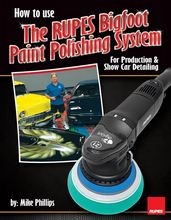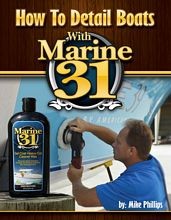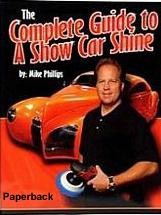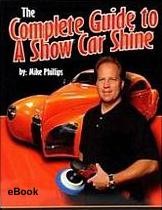"Use the least aggressive product to get the job done"
I`m a strong advocate of giving due credit where credit is due for both professional and personal reasons. To this point I want to give credit to Meguiar`s for this quote and philosophy, or approach towards working on automotive paints. I learned this philosophy from Meguiar`s when I went to work for them in 1988 as an Outside Sales Rep and Trainer for Oregon, Washington and Idaho.
I know they`ve been teaching this practice probably from their inception in 1901, that`s over one hundred years. I don`t want to claim anyone else`s work and/or words as my own and it`s my eternal hope that others will reciprocate this basic and professional code of conduct.
Now that I`ve given credit where credit is due, I would like to state that while I learned this philosophy or approach to working on paint from Meguiar`s, I`ve never seen anything else ever written on this topic either on paper or on the Internet so let me share what it means, why it`s important ... and to put this approach into practice...
"Use the least aggressive product to get the job done"
The reasoning and logic behind this statement and approach towards working on car paint is for two reasons.
Reason 1 - Automotive paints are thin
Factory applied paint whether it came on a Model T or a brand new Ford Mustang is thin, very thin, thinner than most of us prefer. It`s thin because it cost more to apply more paint in the way of materials, (the paint itself), and also time, as in the time it takes to spray the paint and allow flash time in-between each coating.
Time is money, so on an assembly line, or even in a body shop, more time means more money, for theses two reasons, cost of materials and time, paint is on a new car or paint from a body shop is thin.
Reason 2 - Removing below surface defects means removing a little paint
Below Surface Paint Defects are things like swirls, scratches, and etching like Type II Water Spots. Because these types of defects are below the surface level, that means they are "in" the paint, the only way to remove them is to abrade and remove a little of the surrounding paint until you level the upper most surface of the paint job until it`s level with the lowest depths of the defects you`re trying to remove.
In simple words... removing swirls, scratches and etching means removing a measured amount of paint.
Now let me tie the two concepts above together... follow me on this...
Paint is thin, removing defects means removing paint, there`s not a lot of paint available to remove.
Starting to see the problem?
The top coat of paint on your car, no matter what type of paint system you have, (basecoat/clearcoat or single stage), is thin so you must keep this in mind anytime you`re working on it or you let someone else work on it.
"Use the least aggressive product to get the job done"
The reason you want to use the least aggressive product to get the job done is so that you`ll leave the most amount of paint on the car to last over the service life of the car.
Make sense?
If you want to get deeper... this means that in order to use the least aggressive product to get the job done... you need to have more than one product in your arsenal of detailing supplies or how can you do any testing?
If you`re a detailer, or a car owner that likes to take care of your own personal cars, then you need to have more than one paint correction product in your arsenal of detailing supplies.
Tool Time
Products are like tools, they enable you to perform a specific procedure or task that you couldn`t otherwise do. Just like a screwdriver enables you to either remover or install a screw, a quality compound or polish enables you to remove defects and restore a show car finish.
You need some tools in your tool box!
If you haven`t already, consider adding a few tools to your tool box so anytime you`re working on a car`s finish you`ll already have the tools you need to do some testing and then tackle the job.
A well rounded inventory would include,
- Aggressive Compound for serious paint defects
- Medium Cut Polish
- Light Cut Polish
- Finishing Polish
- Hand applied paint cleaner
- Cleaner/Wax
- Non abrasive glaze or pure polish
Where the rubber meets the road...
Putting the philosophy into practice means anytime you`re going to work on your car or a customer`s car, instead of diving right in head first with your most aggressive product, first test to see if something less aggressive will get the job done.
You see, paint systems are different, some paint systems are more polishable or workable than others but you`ll never know until you do some testing.
I always tell my son this because it`s true...
"You don`t know what you can do until you try"
In the context of detailing, this means you don`t know if you can remove the swirls with a light polish and a soft polishing pad until you try. Sure you can remove them with an aggressive compound and cutting pad but if you`re goal is to preserve your car`s precious, thin coat of beauty, then start each project by doing some testing and try to find the least aggressive product in your detailing arsenal that will enable you to get the job done...

Results 1 to 1 of 1
-
09-06-2010, 10:19 AM #1
"Use the least aggressive product to get the job done"
Mike Phillips
Host - Competition Ready on Velocity Channel
Director of Training Autogeek & Marine 31
Competition Ready Facebook Page
Mike Phillips Facebook Page
Twitter
Instagram
Click on a book to get your own copy.







Thread Information
Users Browsing this Thread
There are currently 1 users browsing this thread. (0 members and 1 guests)
Similar Threads
-
"Use the least aggressive product to get the job done"
By Mike Phillips in forum The Detail Institute presented by Autopia-carcare.comReplies: 0Last Post: 12-10-2010, 09:17 AM -
What makes a "boutique" car care product "boutique"?
By CharlesW in forum Detailing Product ReviewsReplies: 10Last Post: 07-20-2009, 01:45 PM -
"Product"rich....." How to " poor
By dubbadog in forum Car DetailingReplies: 6Last Post: 10-16-2004, 05:22 PM -
What makes a foam pad "aggressive"?
By superstring in forum Car DetailingReplies: 19Last Post: 06-01-2004, 10:41 AM -
"Best Product" recommendations for Tire Shine and "Quick Detail" spray....
By ChicagoRay in forum Car DetailingReplies: 3Last Post: 04-22-2002, 02:36 PM






 Reply With Quote
Reply With Quote
Bookmarks